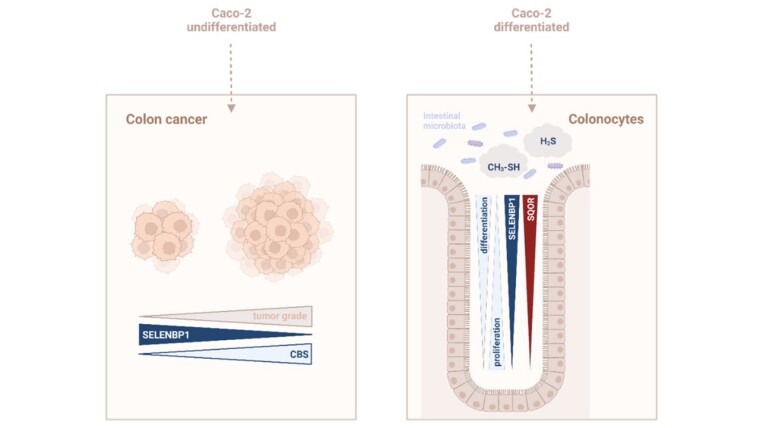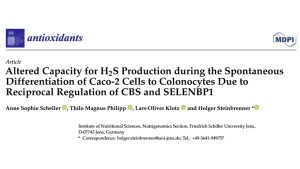
Scheller et al., 2022
Screenshot: Josephine PriebsAbstract
Hydrogen sulfide (H2S) has been proposed to promote tumor growth. Elevated H2Slevels have been detected in human colorectal cancer (CRC) biopsies, resulting from the selective upregulation of cystathionine β-synthase (CBS). In contrast, the recently identified novel H2S-generating enzyme, selenium-binding protein 1 (SELENBP1), is largely suppressed in tumors. Here, we provide the first comparative analysis of the four human H2S-producing enzymes and the key H2S-catabolizing enzyme, sulfide:quinone oxidoreductase (SQOR), in Caco-2 human colorectal adenocarcinoma cells. The gene expression pattern of proliferating Caco-2 cells parallels that of CRC, while confluent cells undergo spontaneous differentiation to a colonocyte-like phenotype. SELENBP1 and SQOR were strongly upregulated during spontaneous differentiation, whereas CBS was downregulated. Cystathionine γ-lyase and 3-mercaptopyruvate sulfurtransferase remained unaffected. Terminally differentiated cells showed an enhanced capacity to produce H2Sfrom methanethiol and homocysteine. Differentiation induced by exposure to butyrate also resulted in the upregulation of SELENBP1, accompanied by increased SELENBP1 promoter activity. In contrast to spontaneous differentiation, however, butyrate did not cause downregulation of CBS. In summary, SELENBP1 and CBS are reciprocally regulated during the spontaneous differentiation of Caco-2 cells, thus paralleling their opposing regulation in CRC. Butyrate exposure, while imitating some aspects of spontaneous differentiation, does not elicit the same expression patterns of genes encoding H2S-modulating enzymes. Scheller et al., 2022Externer Link
